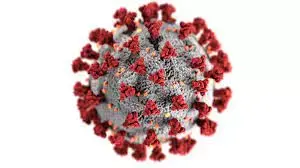Colbert contracted Covid earlier this week and started off by hosting a show at home – much like he did during the pandemic. However, the CBS show was pulled yesterday and has also been pulled for the rest of the week.
Covid was also responsible for the cancellation of Strike Force 3 – Colbert, Jimmy Fallon and Jimmy Kimmel’s live show that was set to take place in Las Vegas last month before Kimmel contracted Covid.
Colbert himself had to pause production on The Late Show last year after testing positive in April and a recurrence in May.
Totally normal and sustainable society, I definitely see no negative repercussions from this trajectory. BUT, for totally unrelated reasons I would love if we had a database of when celebrities get covid just so I don't have to continue wondering when rich people with much better healthcare than me drop dead of strokes and heart attacks years earlier than normal.
btw Physics Girl is still recovering from Long Covid and all her youtube friends are still out there not masking. :yea:



Ooh I didn't know about that one, that's super cool, thanks!
Another cool one is Schistosoma mansoni
Quoting from Parasite Rex, chapter 2, by Carl Zimmer:
CW: Parasite romance and sex, inside of a human
spoiler
Edited to add:
Cw: Personification of parasite
spoiler
(In song):
Surfin' the waves
It's what I do
In my little
Blood canoe
I didn't know that one. Nice - so to speak.
How about this one? It's a wasp that manipulates caterpillar into serving as bodyguards.
Another...
Polysphincta gutfreundi is a wasp that manipulates spiders. The link I have is 13 years old but Wikipedia doesn't have anything about it and google isn't being helpful.
Drugged spiders' web spinning may hold keys to understanding animal behavior | Smithsonian Insider
My quotes are short because this stuff I bookmarked to "read later". And as is my custom "later" hasn't come (yet).